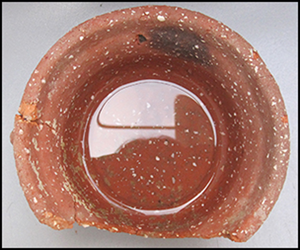Article contents
What's that smell? New directions for materials studies
Published online by Cambridge University Press: 01 September 2020
Abstract

‘Smellscapes’ have become an increasingly popular concept in recent years. Here, the authors argue for a new direction in sensorial archaeology by focusing on the ‘smell of things’ or the potential information held in the odours of archaeological objects. They offer a case study using early modern earthenware ceramics from Portugal—renowned for the distinctive smell and taste imparted to their contents—to explore the possibility of developing standardised analytical techniques and vocabularies that would allow archaeologists to describe the odours associated with artefacts.
- Type
- Research Article
- Information
- Copyright
- Copyright © Antiquity Publications Ltd, 2020
References
- 2
- Cited by




